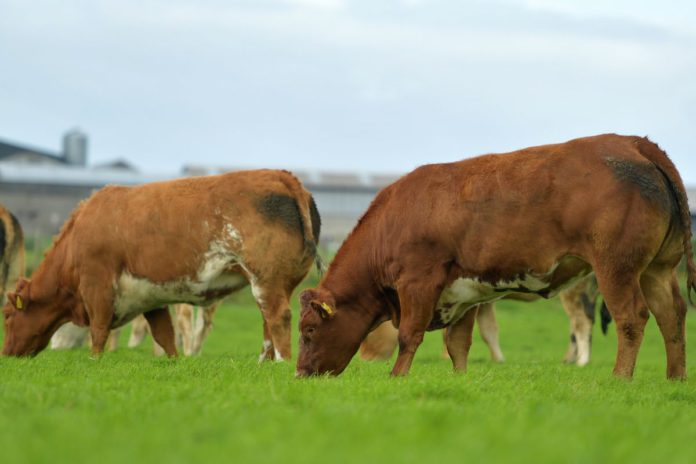Replacement heifers
Are my heifers heavy enough for breeding? That is a question suckler farmers commonly pose when selecting breeding females from their herds as replacements.
Teagasc advises that heifers need to be 60% of their mature weight at bulling, as a cattle breeding specialist, Martina Harrington, highlighted during a webinar on suckler breeding targets.
She told farmers: “You need to make sure that your heifers are well-enough grown. If the average weight of your mature cows is 700kgs, you are going to need your heifers at 420kgs at 15 months, which equates to an ADG (Average Daily Gain) of 0.8kgs).”
“If you have cows 800kgs, those are going to have to be up on 480kgs at 15 months, which is an ADG of 0.95kg, to make sure they are going to be fully grown when they are a mature cow.”
Furthermore, she explained that suckler farmers with cows in the region of 650kgs will need to ensure replacements are circa 390kgs at 15 months, which is an ADG of 0.75kg/day.
Buying heifers and in-calf cows
Harrington also provided advice to farmers who buy heifers and cows as part of their suckling system.
She explained: “When buying in heifers, ensure they are a good weight. The other thing is to get them in on whatever vaccination programme you have in your herd.”
“If you are buying in-calf cows, ensure they are well-fed coming down to calving. The thing with these two systems, when are you are buying in heifers or in-calf cows, you do not know what you are buying in or their health status. That is probably one of the big warnings with them.”
“If you are buying in-calf cows, find out what are they in-calf to and when they are going to calf down. These may impact your achievement of a 365-day calving interval,” Harrington concluded.
Other articles on That’s Farming:





